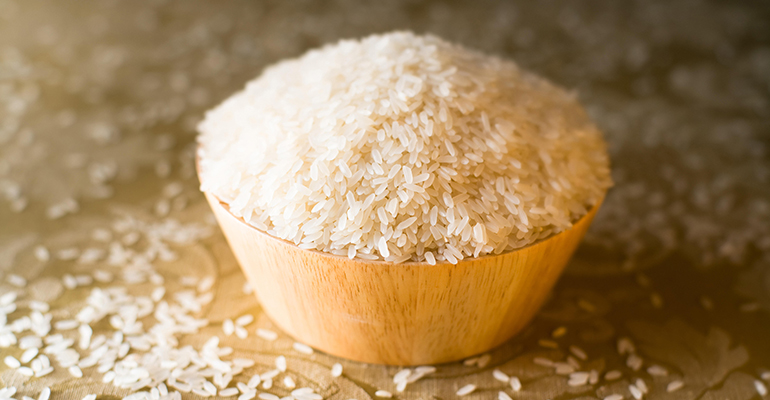News
Researchers find traditional rice varieties with strong ‘anti-cancer’ properties
4 Oct 2021Filipino-led researchers have discovered rare, traditional rice varieties that exhibit ‘anti-cancer’ properties with the genetic traits for more catechins and flavonoids - paving the way for healthier rice, they say.
Cancer is one of the leading causes of death around the world, according to the World Health Organization, and although no diet or food has been shown to cure cancer, a wealth of scientific research shows that a diet high in fruit, vegetables, healthy fats, lean protein, and whole grains may help prevent the disease. Non-profit organisation Cancer Research UK estimates that a healthy and balanced diet, rich in the foods described above, could prevent one out of 20 cases of cancer.

Dr Nese Sreenivasulu from the International Rice Research Institute (IRRI) in the Philippines led a team of researchers who set out to identify traditional rice varieties that harbour the genetic basis of natural variation in secondary metabolites and their vital role in human nutrition.
“The traditional rice varieties identified in the present study exhibit anti-cancer properties with multiple nutritional properties such as higher catechin levels, antioxidant, and low glycaemic index properties,” Sreenivasulu told The Ingredients Network.
The findings, published in The Plant Journal, are important because although the importance of brown rice as a nutritionally dense food staple has long been established, the scientists have now revealed genetic links to the production of plant metabolites that are important to human health.
“These traditional landraces could be promoted to be grown by rice producers as the germplasm possess superior nutritional properties which are likely to get premium,” Sreenivasulu said. “In addition, these traditional landraces could be promoted to be grown organically to produce safer rice without pesticide residuals.”
The traditional varieties are also high in amylose, which makes them suitable to make red rice pasta and noodles.
“In addition, one might be able to promote functional food through bioprocessing applications to retain higher bioactive in the final food products to promote sustainable human health benefits,” Sreenivasulu added.
IRRI Research Director Ajay Kohli said the discovery was exciting because of the prospective downstream application in breeding rice varieties with multi-nutritional properties.
“Bridging cutting-edge upstream discovery science like metabolomics and computational analytics to the downstream application of generating nutritionally dense and medically-relevant rice lines, and their critical evaluation and interpretation for the benefit of humankind, is the new paradigm operational at IRRI,” Dr. Kohli said.
Demand for healthier rice in Asia
The genetic variations found in the heirloom rice varieties are also linked to a low glycaemic index (GI), which is ideal for rice consumers with type 2 diabetes, the researchers noted.
More than 60% of people with diabetes globally live in Asia, with almost one-half in China and India combined, according to an estimate by the International Diabetes Federation.
As diets in Asia tend to be heavily based on rice, small changes to the nutritional properties of rice could have a significant impact on public health outcomes. A number of companies are developing ways to make carb- and rice-heavy diets healthier.
One Singapore company, Alchemy Fibre, makes a plant-based ingredient high in probiotic and prebiotic fibre that lowers the glycaemic index of refined carbohydrates without altering their taste, texture or colour. The ingredient looks like small grains of rice and is added to standard rice while cooking, reducing the digestion rate of white rice to that of brown and adding three times more fibre than brown rice.
Alchemy Fibre’s ingredient works by absorbing water and forming a gel around the rice’s starch chain, meaning it is harder for enzymes to break them down. This slows down the digestion process and releases less glucose from the refined carbohydrates.
